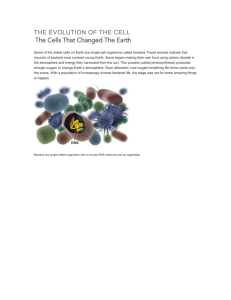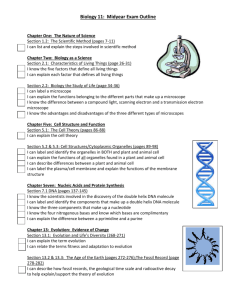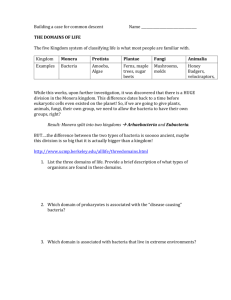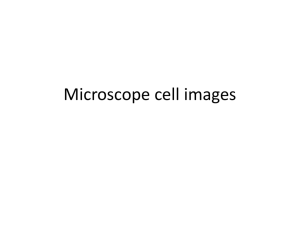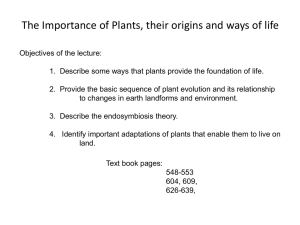Lecture 9
advertisement
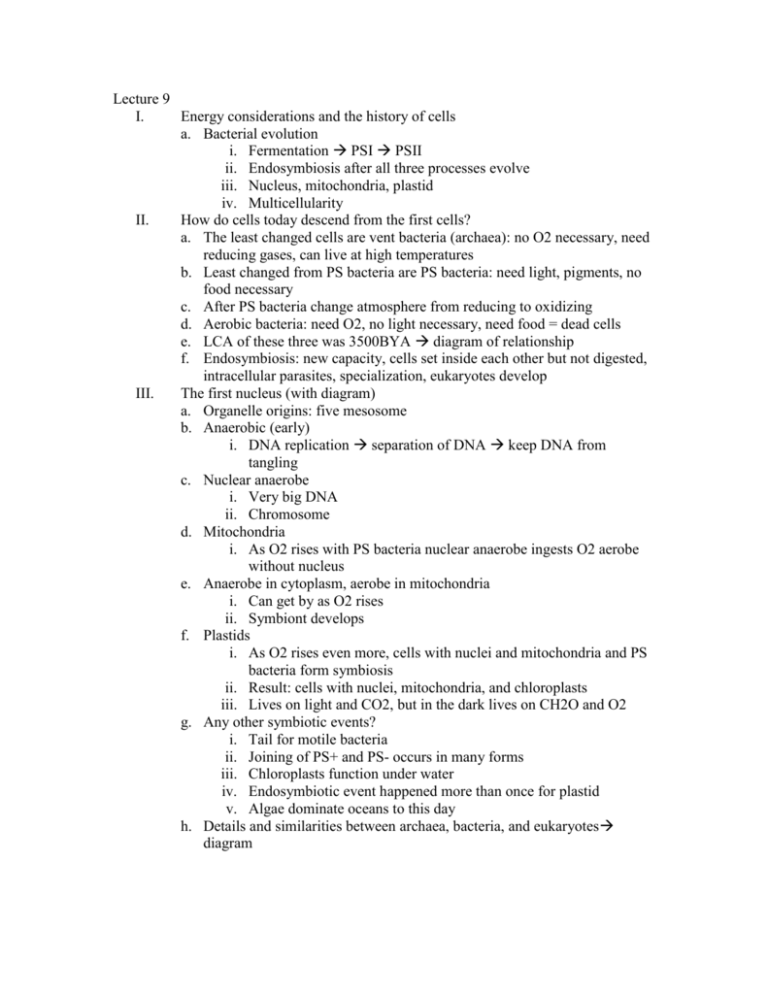
Lecture 9 I. Energy considerations and the history of cells a. Bacterial evolution i. Fermentation PSI PSII ii. Endosymbiosis after all three processes evolve iii. Nucleus, mitochondria, plastid iv. Multicellularity II. How do cells today descend from the first cells? a. The least changed cells are vent bacteria (archaea): no O2 necessary, need reducing gases, can live at high temperatures b. Least changed from PS bacteria are PS bacteria: need light, pigments, no food necessary c. After PS bacteria change atmosphere from reducing to oxidizing d. Aerobic bacteria: need O2, no light necessary, need food = dead cells e. LCA of these three was 3500BYA diagram of relationship f. Endosymbiosis: new capacity, cells set inside each other but not digested, intracellular parasites, specialization, eukaryotes develop III. The first nucleus (with diagram) a. Organelle origins: five mesosome b. Anaerobic (early) i. DNA replication separation of DNA keep DNA from tangling c. Nuclear anaerobe i. Very big DNA ii. Chromosome d. Mitochondria i. As O2 rises with PS bacteria nuclear anaerobe ingests O2 aerobe without nucleus e. Anaerobe in cytoplasm, aerobe in mitochondria i. Can get by as O2 rises ii. Symbiont develops f. Plastids i. As O2 rises even more, cells with nuclei and mitochondria and PS bacteria form symbiosis ii. Result: cells with nuclei, mitochondria, and chloroplasts iii. Lives on light and CO2, but in the dark lives on CH2O and O2 g. Any other symbiotic events? i. Tail for motile bacteria ii. Joining of PS+ and PS- occurs in many forms iii. Chloroplasts function under water iv. Endosymbiotic event happened more than once for plastid v. Algae dominate oceans to this day h. Details and similarities between archaea, bacteria, and eukaryotes diagram
